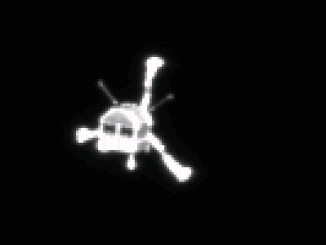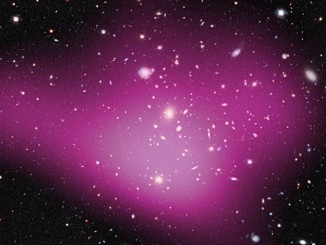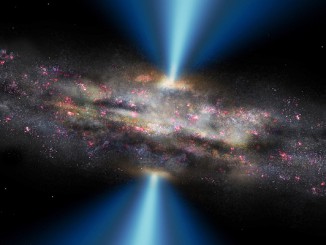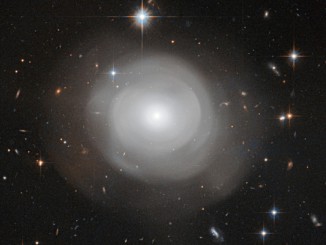
Month: July 2015





Huge new survey to shine light on dark matter
The first results have been released from a major new dark matter survey of the southern skies using ESO’s VLT Survey Telescope (VST) at the Paranal Observatory in Chile. The VST KiDS survey will allow astronomers to make precise measurements of dark matter, the structure of galaxy halos, and the evolution of galaxies and clusters.



Gigantic, early black hole could upend evolutionary theory
Astronomers have spotted a super-sized black hole in the early universe that grew much faster than its host galaxy. The discovery challenges previous notions about the way host galaxies grow in relation to black holes and casts doubt on earlier suggestions that the radiation emitted by expanding black holes curtails the creation of stars.

A galaxy in bloom: new Hubble snap of ESO 381-12
The ghostly shells of galaxy ESO 381-12 are captured here in a new image from the NASA/ESA Hubble Space Telescope, set against a backdrop of distant galaxies. Some 270 million light-years from Earth in the constellation of Centaurus, ESO 381-12 is categorised as a lenticular galaxy — a hybrid type that shares properties with both spiral and elliptical galaxies.

Royal Astronomical Society’s National Astronomy Meeting 2015 – report 4
On the final day of NAM2015, science writer Kulvinder Singh Chadha investigates a new model that generates accurate predictions of irregularities within the Sun’s 11-year heartbeat, suggesting that solar activity could fall by 60 percent during the 2030s to ‘mini ice age’ conditions. Kulvinder also looks back at the lighter moments and highlights of a successful conference.
